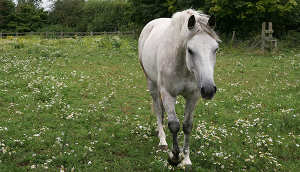 Recently I’ve been updating the images in my colors section and giving the section a bit of a facelift. It’s a lot of work, but it’s a pretty job.
Recently I’ve been updating the images in my colors section and giving the section a bit of a facelift. It’s a lot of work, but it’s a pretty job.
Modifiers
There are a wide variety of color modifiers which can affect both the base colors as well as each other. They can also be further affected by dilutions and white patterns. Today I want to share a little about the grey modifier and how it affects horse color.
Grey Modifier
The grey gene is dominant and does not skip generations. The process of greying out is similar to that in humans and as the horse ages pigment is removed from their hair. Grey animals can be born any base shade and will eventually become white. This gene is commonly found in most breeds.

Grey Shades
Grey shades vary by animal, breed, base color and greying process. Every shed will produce a different white pattern on a grey. Animals with a black base are called steel grey (which can look almost blue) and animals with a bay or chestnut base are called rose grey (which can look almost pink).
Greying generally starts on the face and spreads quickly to the mane and tail.
Learn More About Color
Be sure to visit the new and improved color section for more information about grey horses and stay tuned, next week we’ll take a look at the bay modifier.